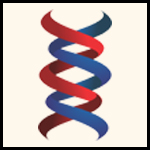
A 501 ( c )( 3 ) non-profit providing information to patients, providers and caregivers for health and wellness!

A 501 ( c )( 3 ) non-profit providing information to patients, providers and caregivers for health and wellness!

Congestive Heart Failure (CHF) affects 2% of adults. Approximately 50% die within 5 years. The initial adaptive response is increased Sympathetic Nervous System (SNS) activity, increasing cardiac output. Norepinephrine (NE) mediates this by stimulating the β1 adrenergic receptor’s Protein Kinase A (PKA) pathway, increasing activity of: (1) the Sino-Atrial Node (SAN, +chronotropy); (2) L-type Ca++ channels (+inotropy); (3) sarcoplasmic reticulum (SR) ryanodine receptors (RyRs, +inotropy); (4) Ca++-ATPase (SERCA) (+lusitropy); and (5) cardiac myosin-binding protein C (cMyBP-C) (+inotropy/lusitropy). Chronically high SNS tone becomes maladaptive, worsening CHF via desensitization and internalization of β1 receptors, ά1 receptor increased afterload, left ventricular hypertrophy (LVH), changing phosphodiesterase (PDE) isoforms. and necrosis and apoptosis. β-blockade is the cornerstone of therapy. Focus. Since CHF mortality and morbidity remain high, we investigated ranolazine’s (RAN) efficacy when added to Guideline therapy. In the first investigation, 54 CHF patients were randomized to adjunctive RAN (RANCHF, 1000mg bid) verses NORANCHF. Autonomic measurements (ANX 3.0 Autonomic Monitor) were taken at baseline and 1 year. Of the entire cohort, 59% were initially abnormal, including high Sympathovagal Balance (SB) that normalized in 10/12 (83%) RANCHF patients verses 2/11 (18%) NORANCHF patients. High SB developed in 5/11 (45%) NORANCHF verses 1/11(9%) RANCHF patients. In the second investigation, matched CHF patients were given adjunctive RAN (1000 mg po-bid) (RANCHF, 41 systolic, 13 diastolic) verses NORANCHF (43 systolic, 12 diastolic). Echocardiographic LVEF and autonomic measures were obtained at baseline and follow-up (mean 23.7 months). LVEF increased in 70% of RANCHF patients, an average of 11.3 units. Mean LVEF remained unchanged in NORANCHF patients. At baseline, 28% of patients had high SB. RAN normalized SB in >50%; the NORANCHF group had a 20% increase in patients with high SB. RAN reduced (composite endpoint) CHF admissions, cardiac death, ventricular tachycardia and fibrillation [VT/VF]) by 40%. Conclusion, RAN substantially corrects the maladaptive SNS CHF response.

